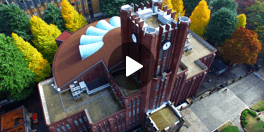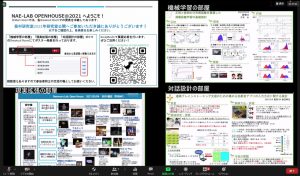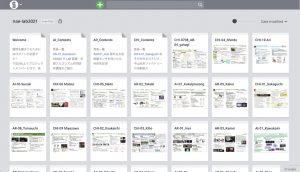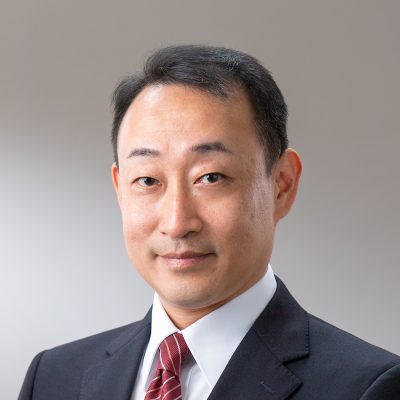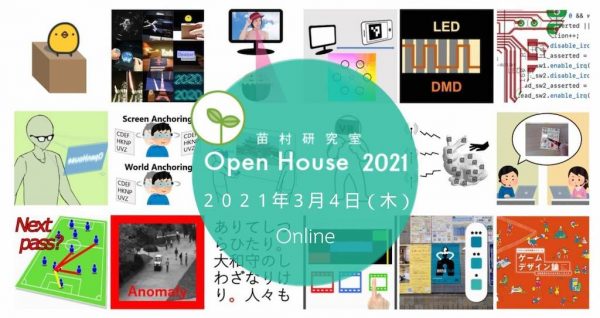
May 13, 2021
苗村研究室オープンハウス2021・レポートNaemura Lab Open House 2021 Report
2021年3月4日、苗村研究室 オープンハウス2021が開催されました。感染症対策としてZoomを利用したオンライン形式にて教員や学生の28件に及ぶ発表が行われました。
オンラインでの発表は物理的な対面形式と比較すると、参加者との双方向的な議論や時間的制約が課題とされています。オープンハウスでは研究を3つのグループに分類し、Zoomのブレイクアウトルーム機能を用いて参加者が自由に部屋を出入りして発表を聞くことが出来るようにイベントの設計がなされていました。発表は1時間を1セットとして同じ内容を3回繰り返す構成で、各グループの発表をそれぞれ聞いて成果を幅広く知る事や、3セット全て同じグループに参加して発表者との対話や同グループの研究の接続性を理解する事、途中からの参加者が入場のタイミングによる聞き損じが発生しないようにするといった、参加の仕方を選べるような工夫が施されていました。また、質疑応答にはScrapboxを用いたテキストによる記述形式を採用しており、発言が難しい参加者が書き込んだり、前のセットで出てきた質問の回答が見ることが出来、全体として理解の促進につながっている印象でした。
発表では、機械学習によるサッカーのパス予測やヘッドマウントディスプレイ使用時のテキストによる情報提示、掲示されるポスターの配色を推薦するなどの他分野にわたり人と情報との関わりを深める研究が進められていました。合わせて、今年度さらに注目される分野となった遠隔コミュニケーションのための研究も幅広く提案されていました。また、本郷テックガレージや中山未来ファクトリー、東京大学インクルーシブ工学連携研究機構(RIISE)など学内で横断的に実施されている研究や取り組みについても発表が行われており、苗村研究室のハードウェアやソフトウェアの知見の幅広さだけでなく、多様な状況におけるコミュニケーションや、様々な興味・境遇を持った教員と学生の協働が行われていることがわかるオープンハウスでした。
記事:伊達 亘(特任研究員)
写真:苗村 健(教授)
On March 4, 2021, an Open House was held at the Naemura Laboratory of the University of Tokyo. A total of 28 research presentations by faculty and students were given in an online format using Zoom.
Compared to the physical face-to-face format, online presentations present challenges in interactive discussions with participants and time constraints. At the Open House, the research was categorized into three groups. The event was designed so that participants could freely move in and out of the room to listen to the presentations using the breakout room function of Zoom. The presentations were organized in sets of one hour, with the same content repeated three times, so that participants could listen to each group’s presentation to get a broader understanding of the results, join the same group for all three sets to interact with the presenters and understand the connectivity of the group’s research, and join in the middle of the event to avoid missing anything due to timing. Also, there was a way for participants to be able to choose how they wanted to participate. In addition, the question and answer session adopted a text-based writing format using Scrapbox, which allowed participants who had difficulty speaking to write in and see the answers to questions raised in the previous set.
The presentations included research on deepening the relationship between people and information across different fields, such as predicting soccer passes using machine learning, presenting text information using a head-mounted display, and recommending color schemes for posters displayed on campus. There was a wide range of research on remote communication, a field that has been attracting attention this year. Also, presentations were made on research and initiatives being conducted across the university, including the Hongo Tech Garage, Nakayama Future Factory, and Research Institute for an Inclusive Society through Engineering (RIISE). In addition to the wide range of hardware and software knowledge of the Naemura Laboratory, the Open House showed communication in diverse situations and collaboration between faculty and students with various interests and backgrounds.
Text: Wataru Date (Project researcher)
Photo: Takeshi Naemura (Professor)
English proofreading: David Buist (Senior project specialist)
主担当教員Associated Faculty Members
教授
苗村 健
- 先端表現情報学コース
- 情報学環教育部
Professor
NAEMURA, Takeshi
- Emerging design and informatics course
- Undergraduate research student program

